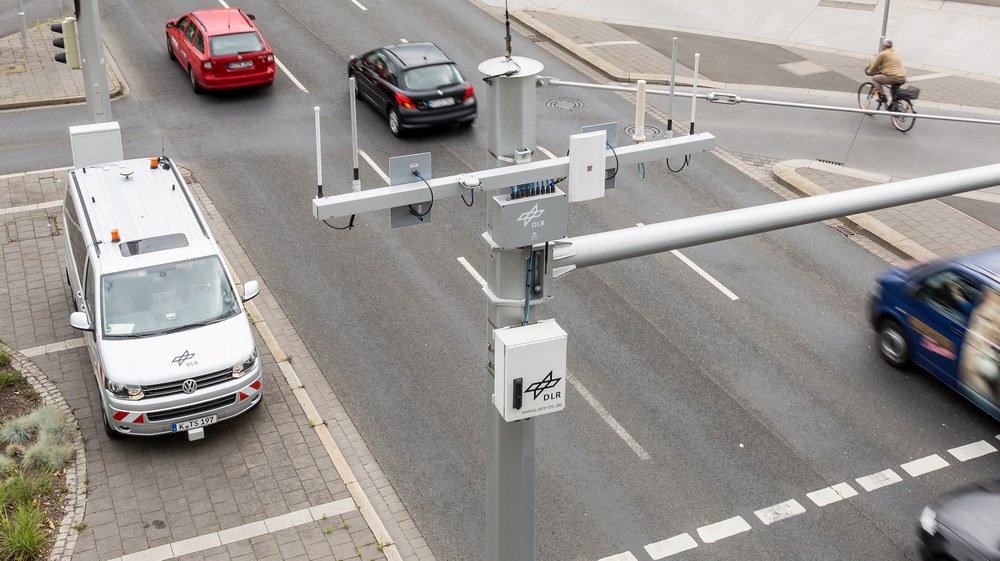Reference route – research on Vehicle-2-X communication
New functions of driving assistance systems should be tested not only in virtual traffic simulations, but also under real-time conditions in actual road traffic. With the aim of improving road safety, we have been operating a reference route through Braunschweig since 2014.

What is the purpose of the Braunschweig reference route?
The reference route along the Braunschweig inner-city ring road serves to test and evaluate cooperative driver assistance systems and supports the development and testing of new transmission protocols between vehicles and road infrastructure (for example, traffic lights). To enable this connectivity, 56 traffic light intersections are equipped with DLR communications technology – referred to as Road-Side Units (RSU). Communication with the vehicle and vice versa is carried out using the V2X communications system.
Advantages of the urban test field on the Braunschweig reference route
- Tests under real-time conditions
- With the results from the text field, driver assistance systems can adapt their behaviour and drive in a more predictable and energy-efficient manner
- Output values for the development and testing of modern and efficient traffic management
- In addition to the reference route, vehicles equipped to observe driver behaviour and various traffic simulators operated by DLR are available for tests
- Data from different sources and systems can be combined with each other (for example, different test vehicles and test routes)
- Testing is possible with all test vehicles
- The urban test field enables testing of all subcomponents (driving manoeuvres, sensor technologies)
- Processed non-personal data from DLR tests can be made available to companies and institutions
Application
We are adopting the following measures on the Braunschweig reference route:
- Practical testing of V2X communication in the urban test field
- Sending vehicle data to the infrastructure for local added value; for example, for prioritising emergency vehicles
- Transmission of information to the vehicle on the condition of the road; for example, black ice, aquaplaning
- Development and testing of cooperative assistance; for example, green light assistance
- Joint projects from research and industry
- Testing of driver assistance systems, modern traffic management and sociological traffic analyses
General and technical data
General data
- Location: Braunschweig inner city ring road
- Opened: 2014
- Operation: year round
Technical data
- 56 intersections equipped as Road-Side Units (RSU) with Vehicle-2-X technology
- Data sent and received via ETSI ITS-G5 V2X or, in some cases, Cellular-V2X
- Development framework for local services such as microrouting
- Monitoring and management system
- Connection to DLR backend services
- Additional sensors at selected intersections
Reference projects
Along the reference route in Braunschweig, 56 intersections are currently equipped with the following communication technology, which are referred to as Road-Side Units (RSU):
- V2X communication technology (IST-G5 and C-V2X)
- interface to the traffic light control unit
- additional sensor technology at selected intersections
Our collaborations
Our reference route is operated in partnership with the city of Braunschweig, the state of Lower Saxony and various bodies from the public sector, industry and scientific research.
FAQ – frequently asked questions about the Braunschweig reference route
Which vehicles will be used in the urban test field?
All research vehicles from the DLR vehicle fleet can be equipped with V2X communications technology and special sensor technologies and are therefore suitable for use on our reference route.
Can the facilities of the reference track be used for own tests?
All DLR facilities – and thus also our reference track – can be used for tests by external partners and customers. Please contact us for more information.
When can tests be carried out on the reference track (time of day, weather conditions)?
Our research vehicles and the technology of the Road-Side Units (RSU) along the reference route can be used all year round and in all weather conditions.
